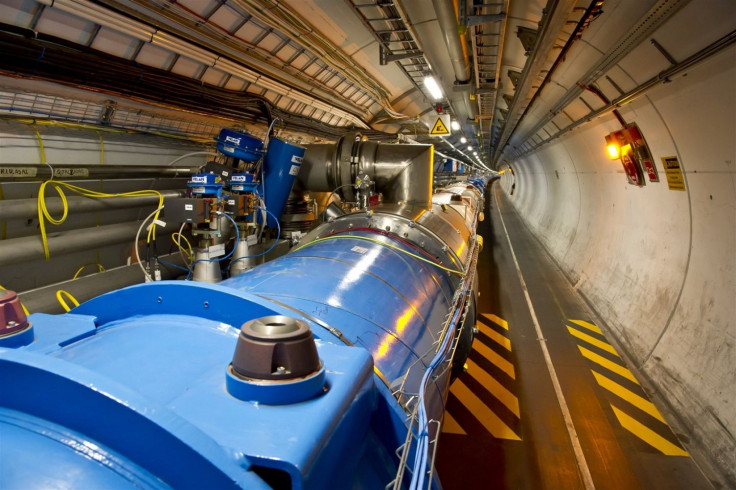CERN LHC Update: Large Hadron Collider Breaks Record For Circulating Proton Bunches

Five weeks after the Large Hadron Collider began physics for its 2017 run, it has reached its current maximum limit of proton bunches produced. On June 28, two beams collided in the LHC and produced 2,556 proton bunches each that circulated in opposite directions of the 17-mile tunnel that makes the particle accelerator.
The beams in the LHC are made up of these proton bunches that are separated by seven meters (23 feet) each, which is only 25 nanoseconds for the speed at which these particles are traveling. Each of these bunches contains over 100 billion protons, and a higher number of bunches being produced means a higher chance of actual collisions happening within the collider.
Read: Particle Accelerator That To Succeed LHC Will Be 3 Times As Big
In a statement updated Monday, the European Organization for Nuclear Research (CERN), which built and operates LHC, said the peak luminosity reached so far was over 10 percent more than the 2016 record. Luminosity refers to the number of potential collisions per unit of surface area over a given time period and is measured in inverse femtobarns. The LHC reached luminosity of 40 inverse femtobarns during its 2016 run and has a target of 45 inverse femtobarns for its ongoing run. On June 28, over 6 inverse femtobarns had already been integrated by LHC’s general purpose experiments — ATLAS and CMS — CERN said in the statement.

The proton bunches are prepared and accelerated by a series of four accelerators, and a new method of grouping and splitting the bunches was put in place in 2016. This method squeezes the particles closer together than before, thereby keeping the number of protons the same but reducing the beam diameter by 40 percent, from 3.5 micrometers and 2.5 micrometers. The increased density of particles in the beams also increases the luminosity.
However, the higher density also means the beams carry more energy per surface unit. Such a high-energy beam, therefore, can potentially cause more damage to the equipment if it went off-track, for instance, between its point of generation and the LHC. To minimize the possibility of this happening, the maximum number of bunches is limited to 100 per injection of beams.
Read: Large Hadron Collider Starts 2017 Run In Earnest
Housed hundreds of feet underground at the French-Swiss border, LHC — presently the world’s largest and most powerful particle accelerator — is currently undergoing a one-week technical stop for maintenance. Another such technical stop will take place later in the year.
There are two broad lines of study at the LHC: known physics, comprising of the Standard Model, and unknown phenomenon. ATLAS and CMS will continue through 2017 to investigate the Higgs boson, discovered at LHC in 2012. The two experiments are also looking for new particles which could be components of dark matter.
There are already plans being drawn up for the successor to the LHC. The proposed Future Circular Collider will be three times as long and seven times more powerful. To be built quite close to the existing LHC facility, FCC will try to answer some of the questions thrown up by the discoveries made by the LHC.
© Copyright IBTimes 2024. All rights reserved.





















